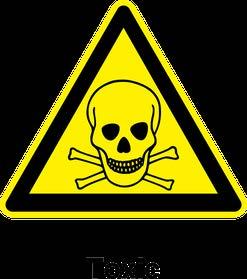
35 minute read
THINK GREEN
New restrictions on old chemicals
Regulating PFAS - implications for producers
BY MARIE NIELSEN, ENVIROPASS EXPERTISE INC.
The commonly used term PFAS is short for Per- and Polyfluoroalkyl Substances and is a critical topic of conversation, especially for manufacturers. This family of more than 4700 chemicals has contaminated drinking water and polluted the environment since the 1930s, captivating the attention of North American and European authorities. As an increase in PFAS regulations nears, various industries are impacted. This is true for Electronic and Electrical Equipment (EEE) producers who utilise their important chemical properties: repelling oil and water; resisting heat and chemicals; and lowering surface tension.
Three Steps to Prepare for the Chemical Restrictions
Step 1: Monitor Your Compliance
Knowing the current and upcoming regulations regarding your products and PFAS is the first step to compliance. Here are important regulations in three major markets.
Canada:
In April 2021, the Departments of Environment and of Health issued, within the Canadian Environmental Protection Act 1999, a notice of intent to address PFAS as a whole.
United States:
In the US, the Environmental Protection Agency (EPA) has implemented the Toxic Substances Control Act (TSCA) to regulate chemicals on the American market. As of 2020, the TSCA requires the following: • Manufacturers must notify and review a specific PFAS subgroup, the long-chain perfluoroalkyl carboxylates (LC-PFACs). This obligation applies per the Significant
New Use Rule (SNUR) when
LC-PFACs are present in surface coating of imported articles (i.e., electronics, light bulbs, and solar panels). [July 2020] See the Compliance
Guide for Imported Articles
Containing Surface Coatings for more details [Jan. 2021] • Manufacturers must report all PFAS used since 2011 as directed by the TSCA section 8(a)(7). [June 2021]
Additionally, as of October 2021, the EPA released a PFAS Strategic Roadmap detailing their commitments for 20212024. Among the key objectives established, EEE will be a priority industry in the upcoming PFAS Action Act of 2021 (H.R. 2467).
As you can see, the PFAS Strategic Roadmap was released mere weeks ago. As a producer it is important to continuously monitor changes in regulation to maintain compliance.
Europe:
Following the international Stockholm Convention, the European Union’s (EU) Persistent Organic Pollutants (POPs) Regulation restricts both perfluorooctane sulfonate (PFOS) and perfluorooctanoic acid (PFOA), two important PFAS chemicals.
The European Chemicals Agency (ECHA) tracks certain PFAS substances under the Registration, Evaluation, Authorisation and Restriction of Chemicals (REACH) regulation. For example, producers must declare Perfluorobutane sulfonic acid (PFBS), its salts, and PFOA, listed in the Substances of Very High Concern (SVHC).
Lastly, as of February 2023, C9-C14 PFCAs and similar PFAS are restricted for countries in the EU and the European Economic Area under the REACH Annex XVII restrictions.
Step 2: Risk Assessment of Your Parts
Monitoring regulations is an important step, but only if you know what your product’s components contain. Do an internal risk assessment of the parts that are at risk of containing PFAS. Making an itemized list of your purchased components, and what they are made of, will help monitor your compliance throughout changes in regulation.
Step 3: Notify Supply Chain
Make your expectations clear throughout your supply chain. For your purchased parts to be PFAS compliant – whether it be regionally, nationally or internationally – your suppliers need to be aware of your intent. Realistically, not all suppliers have inventoried all their high-risk parts and will therefore require your attention.
These steps are critical, but not always easily managed. To ensure all regulations are met and all parts accounted for, laboratories and consulting companies can assist you to ease the process.
It is important to continuously monitor changes in regulations. Know Your Opponent: The Chemical Significance
What makes a compound a PFAS chemical?
A PFAS molecule contains a chain of carbon and fluorine atoms. The chemical bond between carbon and fluorine is one of the strongest naturally occurring bonds. Since the carbon-fluorine bond is strong and persistent, these chemicals do not break down when they are inevitably released into the environment. This same chemical bond that makes PFAS dangerous for the environment, is an important quality for circuitry and electronics. Producers will need to monitor their products and act in consequence of new regulations.
Noteworthy PFAS chemicals
Three notorious PFAS are polytetrafluoroethylene (PTFE known under the brand name Teflon), PFOA, and PFOS. These were of the first to be vastly manufactured and can be found expansively in the environment. No longer produced in Canada or the United-States due to their impacts on human health and the environment, they have been phased-out. Derivatives of these such as GenX have since been used as replacements. However, they remain just as hazardous and concerning.
Why are PFAS Targeted by Regulations?
PFAS are released through manufacturing processes and the disposal of by-products. Once released, PFAS travel with ease into the environment; they can be found far from where they originated, infiltrating the food chain and contaminating drinking water sources. Due to their persistent nature, these forever chemicals then remain in the environment, accumulating as more are released. Since we cannot get rid of them, their concentrations are increasing, and humans may ingest and inhale excessive quantities. Therefore, the PFAS family is bioaccumulative.
Medical Innovation Xchange scales start-ups
Industry-led hub ensures medtech designs are
in the MIX BY STEPHEN LAW, EDITOR EP&T
Timing, they say, is everything. That certainly was the case when the doors opened to Canada’s first industry-led hub dedicated to helping medical technology start-ups scale. Unveiled amid the emergence of a global pandemic in January 2020, the Medical Innovation Xchange (MIX) in Kitchener Ontario led off with its mission of paying it forward, just as the planet was plunged into an unprecedented global medical emergency.
Leading by mentorship and by facilitating domestic connections to industry experts, MIX assists nascent designers turn prototypes into medical devices. The hub’s goal is help companies navigate specific challenges efficiently, avoid costly mistakes, and get products into hospitals faster to meet increasing demands, according to MIX executive director Elliot Fung.
To provide a clearer view of what MIX does and how the facility operates in reducing barriers and bridging the resource gap facing medical technology start-ups, Fung provides us with the following perspectives.
How big (square footage) is the actual facility and how many people does it employ and in what range of capacities? MIX currently has a footprint of more than 40,000-sq-ft at its facility. Within that space, we have five companies in residence who employ about 150 people. As companies are able to customize their spaces, we also have a number of labs and light assembly spaces, as well as shared collaboration spaces like meeting rooms, a bistro, event space and reception. MIX companies have a wide range of talent on-site, including engineering, quality assurance, software development, clinical, commercialization/ sales, communications, marketing and strategy. MIX is 100% focused on supporting Canadian medtech companies and helping them to overcome barriers to growth, scale and commercialization. Therefore, while all of our companies are currently based in Waterloo Region, we are happy to welcome any medtech firm domiciled in Canada.
How does MIX determine which firms gain access to the hub’s support? It is extremely important that companies who join the MIX community not only share the hub’s values – specifically a vision to build a strong domestic medtech ecosystem and grow more Canadian medtech companies – but also be in the best position possible to achieve success. Through our selection process, we learn about a prospective company and determine if they are in the right phase of their growth, that they are in a ‘scaling’ phase, and that we have the best supports available to actually help them. Companies meet with a selection committee, which ultimately decides who may join the hub - either as a resident or as a network partner.
Describe what it means to be an ‘industry-led’ hub. There are many excellent technology hubs across the country, particularly in Southwestern Ontario, which are primarily founded or funded by either government or academic institutions. These hubs are vital to the ecosystem and are important partners to medtech companies particularly in the start-up phase. MIX is industry-led, meaning we were founded specifically by medtech company partners (industry) who share a vision and passion for supporting the ecosystem and building more successful companies.
As industry experts in turning prototypes into medical devices, what are some of the most common challenges or mistakes faced by companies attemptMIX is vital to the ecosystem and important partners to medtech companies, especially during the start-up phase.

150
People work under the roof of MIX’s 40,000-square-foot medical technology hub in Kitchener ON ing to get their products into hospitals faster to meet increasing demands. As MIX works with later stage companies, we see very unique challenges during the product development lifecycle. The process in which medtech companies need to follow in order to commercialize their products in to the health care system is complex and long. One of the biggest challenges is being able to bridge your financing during the regulatory process – the period in which a medical device is going through certification and prior to sales starting. The regulatory process itself can be complicated, and for a small domestic medtech company can seem overwhelming and daunting; this can lead to decisions that may negatively impact the longevity and success of the company. It is critical at the onset that companies have very clear understandings and expectations of the process in which they need to follow to commercialize a medical technology. Unfortunately, a common mistake is that a lack of understanding of systems, procurement and the decision making process can lead to reduced performance and success.
MIX and MIX companies are experts in helping to solve these challenges and in helping companies in avoiding these mistakes before they even make them. We have found that one of the most valuable

resources for scaling MedTech companies is being able to learn from people and companies who have done it already; either made mistakes, overcome challenges or learned from others.
Describe some of the ways MIX provides mentorship to start-ups. MIX companies are considered ‘scaling’ – which means that they are typically in a stage where they are going through regulatory processes, pre-sales and early sales. Mentorship is tailored to each company and their needs on a point-intime basis; we connect teams with mentors who have valuable information and advice, we create an environment and culture that promotes collaboration and sharing, and we offer a space that allows for growth while surrounded by people and companies who are like-minded.
How does MIX deliver medical device engineering services? Does MIX have its own dedicated engineering team or department or is it outsourced? Is the product testing conducted on premise and to what level is MIX capable of product testing? MIX does not deliver medical device engineering services per se. MIX mentors who have experience or who are experts in product development, engineering, testing, QA etc provide their mentorship services if and when needed. MIX does not offer the service itself, but instead the mentorship and guidance for companies to be successful on their own.
Allocating financial assistance or funding by start-ups is often the differentiator in achieving the necessary foothold in developing new tech. What role does MIX play in this area of support? MedTech companies are particularly vulnerable in crossing the ‘Valley of Death’ while bridging the gap leading to industrial commercialization. The timelines can be longer, the risk greater and available funds need to be distributed across a greater amount of time. MIX companies benefit from mentorship from more established companies who can provide invaluable advice on fundraising and allocating investments during this critical time.
How does the MIX manufacturing facility serve an electronic hardware OEM? Are production facilities set for prototyping only? Are there production run limitations? The MIX facility is a customized space for scaling medtech companies. We currently occupy about 40,000sqft with about half of the space being used for workstations and collaboration/common areas and about half reserved for lab, operations and assembly space. MIX residents have the ability to customize their space to meet their needs.
The pathway to commercializing a medical device is significantly different than creating a personal fitness product
Describe some of the challenges related to creating a medical device from that of a personal fitness device. The pathway to commercialization is significantly different as a medical device goes through clinical testing and federally regulated requirements to aid in the diagnosis, cure, mitigation or treatment of a medical condition. A personal fitness device does not need to go through the same rigors, and is generally considered to be a wellness tool as opposed to a medical device.
As a result, a significant amount of clinical testing and validation is conducted on products being labelled as medical devices, which supports federally governed regulatory requirements. Consequently, the time that it takes to bring a regulated medical device to market can be significantly longer; companies need to make strategic decisions and find strategic investments that can carry them through to commercialization.
The sales approach to medical devices vs. personal fitness devices is also quite different. Health technology companies commercializing a personal fitness device will be competing in a vast, unregulated consumer market, while medtech companies developing regulated devices will typically follow health system and clinical procurement models. Both have their advantages and disadvantages, it just depends on the companies’ strategy and anticipated outcomes.
Is there a preferred company size or success threshold whereby firms must move out of MIX to make room for other medtech start-ups? The short answer is ‘no’. MIX anticipates that resident firms will stay with us for at least 18 months from when they join us to when they ‘outgrow’ the facility. However, we do not put on any timelines and welcome resident firms to grow within our space as much as and as long as possible.
Describe the significance of the role played by anchor tenant Intellijoint Surgical in formation of MIX. MIX and the entire medtech ecosystem is fortunate to have the leadership and commitment from Intellijoint Surgical. Intellijoint Surgical is considered one of MIX’s anchor companies, and is the founding organization of MIX. MIX and MIX resident companies benefit from their experience in bringing a medical device to market while staying headquartered in Waterloo Region. Intellijoint is considered a local success story, and they continue to demonstrate incredible leadership across the ecosystem for up and coming medtech startups.
Who are some the other key medtech players involved with MIX. MIX is fortunate to have a number of established Canadian-based medtech companies involved in supporting our mission. This includes some large companies like Baylis Medical, who became MIX’s newest mentor company in the summer of 2021. Other network partners who have partnered with MIX include other Canadian based companies such as Nicoya, KA Imaging, Conavi and COSM, Exact Imaging and Kenota Health.
Currently besides Intellijoint Surgical, MIX has four other resident companies, which include Emmetros, Bloom Care Solutions, NERv Technologies and Vena Medical. www.medicalinnovationxchange.com
Keeping wellness wearables on track
Precision cleaning proves critical when making these multifaceted assemblies BY EMILY PECK
Wearables are revolutionizing healthcare as they play an increasingly important role in managing health. Wearable technology like fitness trackers designed to collect data on personal health and exercise are growing in popularity. This technology typically monitors heart rate, temperature and blood oxygen levels, giving the user an overall health check and ultimately more control over their own wellness.
The pandemic is also boosting their use. Many people are taking a more active role in maintaining their health in the wake of Coronavirus and the adoption of wearable technology for general wellness purposes is steeply rising.
The global fitness tracker market size was USD $36.34-billion in 2020. Due to the impact of Covid-19, the market is projected to reach a staggering $114.36-billion in 2028 at a CAGR of 15.4% in the forecast period 2021-2028, according to a report by Fortune Business Assets.
It is not just digital health and fitness tracking tools that are increasing in use. Other wearable medical devices like remote patient monitoring (RPM) devices to diagnose and monitor short-term illnesses or long-term, chronic medical conditions are also increasingly prevalent.
Remote patient monitoring
As RPM capabilities advance, wearables which were once mainly used for consumer use are now being widely adopted by healthcare professionals. Wearable monitoring devices allow patients to incorporate convenient health observation and data collection without disruption to their daily lives. This assists in moving medical management outside of the healthcare setting and reducing the burden on healthcare providers, an important benefit since some are still experiencing the strain from the pandemic.
The demand for devices like RPM and wearables means there is an increasing requirement to produce highly complex miniaturized electronics. Critically, the electronic components must deliver reliable and consistent performance, particularly as they are often used in medical devices that are life-sustaining. The problem, however, is that the smaller and more densely packed the electronic printed circuit board assembly (pcba), the more difficult it is to manage faults, quality and long-term reliability. Adding to the fact that they are typically used in products that must endure a long, hard life under harsh circumstances. An example is prolonged exposure to moisture and constant vibration, which makes reliability even more challenging.
Therefore, it is critical that procedures are implemented during the manufacture of these multifaceted assemblies to guarantee their consistency, reliability and longevity.
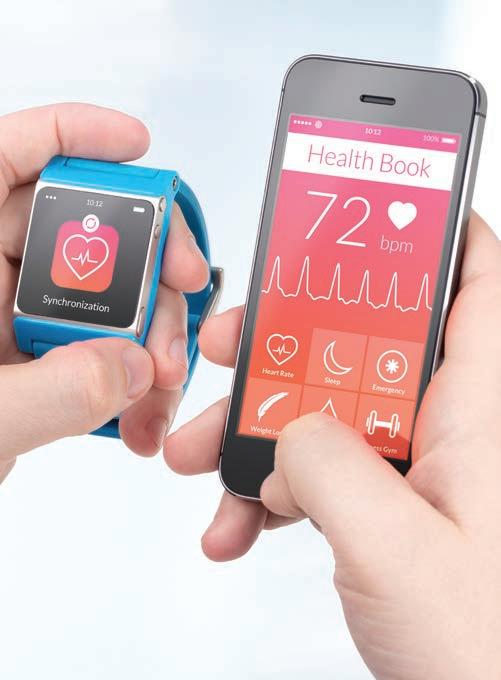
Thanks to its ease of use and flexibility, wearable medical technology is transforming healthcare. Thus, OEMs must better understand how to make them
$36
BILLION
The global fitness tracker market surged in 2020, due in part to the covid-19 pandemic High quality cleaning
High quality cleaning is one critical process to achieve pcba consistency and ensure functionality. Contamination can affect pcba reliability and is often the number one root cause of the malfunction. Even the smallest amount of dirt or another contaminant can interfere with pcb performance.
Modern pcbas are small and densely packed with bottom termination components such as BGAs, CSPs, MLFs, QFNs, and D-Paks. This makes removing the contamination even more problematic. Debris and dust, and oil and grease from the production process as well as solder paste and flux residue, can easily remain on the assembly if they are not cleaned effectively. This can lead to a whole host of problems including parasitic leakage, electrochemical migration, delamination, dendrite growth and shorting. So, cleaning is crucial to ensuring the reliability of a pcba.
The cleaning process should be performed correctly and effectively to guarantee the reliability and longevity of the electronic assembly. It must be suitable for both the contamination encountered and the board substrate, but it must also meet exacting regulations and validation controls typically required of wearable medical devices.
Vapor degreasing
The vapor degreasing process is a good option when it comes to critically cleaning pcba. Vapor degreasers provide a simple, repeatable process that is effective at removing all contaminants. These closed-loop systems boil a nonflammable cleaning fluid into a dense vapor that rises through and is trapped inside the machine. The boiling fluid and vapors combine to clean and dry the contaminated pcbs inside. When the vapors reach condensing coils at the top of the machine, the coils chill the vapors back into a liquid state. This liquid falls into a trough and is made ready for another use.
Finding the right cleaning fluid
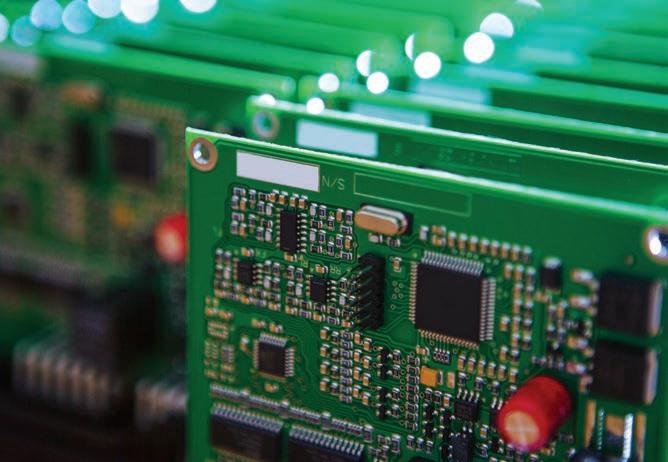
Cleaning is crucial to ensuring the reliability of a PCB assembly. solution to help ensure wearable medical device reliability. By effectively cleaning electronics components, medical device manufacturers can more easily meet the growing medical wearable demand.
Emily Peck is a senior chemist at MicroCare, LLC, providers of benchtop and vapor degreasing electronics cleaning solutions. Peck holds a MS in Chemistry from Tufts University. www. microcare.com.
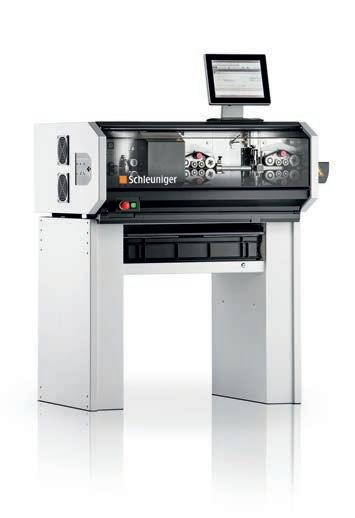
properties that are beneficial to the critical cleaning required within the manufacture of medical PCBAs. They are inherently hostile to bioburden and can make a substantial enhancement to the performance, reliability and longevity of the pcba.
Vapor degreasing fluid usually has a low surface tension and very low viscosity. This allows the fluid to penetrate and clean under tightly spaced areas which are now a common feature in medical electronics. The fluid dries quickly and completely without leaving residue behind. Most vapor degreasing fluids are also very heavy and dense which further serves to displace production particulate from around and under components.
The cleaning fluid properties offer flexibility in cleaning electronics of virtually any geometry or size and yet even delicate parts are easily cleaned and dried without damage. Non-aqueous cleaning fluids used inside vapor degreasers also help eliminate bioburden risk. Solvent-based vapor degreaser cleaning leaves no moisture in hard-to-reach areas that can promote unwanted bacteria growth. This results in simplified product and process validations.
Wearables are the future
Thanks to its ease of use and flexibility, wearable medical technology is transforming healthcare. However, for this market to grow it relies on electronic manufacturers’ understanding how to produce them so they can guarantee long-term performance.
The success of wearable technology hinges on its reliability. This means cleaning is key to their future, particularly as the technology advances and the pcbas used within wearable medical devices become even more multifaceted and complex.
Cleaning is a hurdle that can affect device success, but it is an important obstacle to overcome. If validated critical cleaning processes are not in place, pcba consistency can be compromised with device failure sometimes the inevitable result.
Vapor degreasing using modern cleaning fluids is one
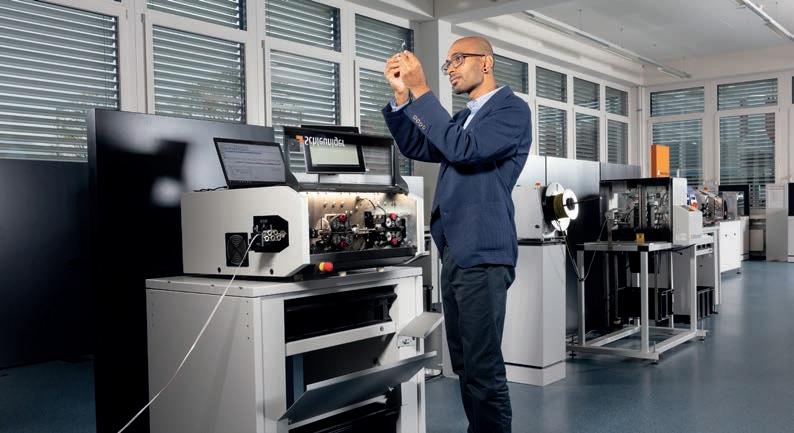
PowerStrip 9580 High-End Cut & Strip Machine for Efficient and Precise Production
The PowerStrip 9580 automatic cut & strip machine was designed with a focus on high-precision processing, excellent production output and a high degree of production flexibility.
High-precision processing of wide range of applications Modular, flexible and retrofittable machine concept Innovative machine control for high productivity and process reliability Short changeover times and intuitive machine operation
Wire Solutions for a Connected World
schleuniger.com 905-827-1166
In order to retain IP rights, you must be able to prove the origin of work done on your firm’s behalf.

When R&D staff leave: Who owns the IP rights?
BY SELENA KIM, LLB, PARTNER WITH GOWLING WLG
Let’s imagine that you’ve hired a receptionist we’ll call ‘Aisha,’ on an employment contract appropriate for a full-time receptionist.
But Aisha gets inspired by your company’s learning culture and promote-from-within policies to build her technical skills. She starts doing work that supports the company’s R&D efforts, in addition to her receptionist duties. Soon, she’s off the receptionist desk and doing R&D full time – so well that you’ve entrusted her with creating some key parts of your product’s mechanism.
Aisha does such great work that one day she comes to you to say she’s been headhunted away.
You’re disappointed, but you’re reassured that at least you have full ownership of the inventions she created while she was an employee of your company.
But maybe not. Maybe you’ll find that in fact, Aisha owns the rights to her inventions. So, you find yourself negotiating to buy those rights from your ex-employee -- who’s well aware of how important those inventions are, to your business.
All such situations are different, and dealing with them requires professional advice. But experience supporting employers in such situations prompts a question – what was in the employment contract Aisha signed? And when she started doing R&D work, did she sign a new contract appropriate to her new role, which contained the appropriate assignments of IP to your company?
Contrary to what many people believe, the basic presumption in law is that the employee owns everything they create. Ownership will go to the company only if (a) there’s a specific agreement with the employee saying that anything the employee invents of a specific type is going to be owned by the company, or (b) the employee was ‘hired to innovate’ – an inquiry that often results in a grey area which requires expensive assessment and resolution by a Court or arbitrator.
In the case of Aisha-the-receptionist, it would be appropriate to have a contract that discussed a receptionist’s duties. But, when she moved into her new role, it would have been best to examine that contract and see if it is appropriate to her new work. If it does not discuss matters appropriate to Aisha-the-inventor, it’s essential to develop and have her sign a new contract appropriate to her new role.
In our experience, many companies miss this step – through lack of knowledge, or too many other priorities, or they are avoiding a discussion that might result in having to increase the employee’s compensation.
Patents can introduce a particular kind of wrinkle into the issue of who owns an invention.
Even if your employee inventor is found to have co-invented the invention and therefore co-owns the patent, it is a real challenge in Canada to co-own a patent. Co-owners can independently make or sell the invention, without consent of other co-owners. They can license or assign their interest in the patent to another single party, so the new purchaser will become a co-owner.
Perhaps frustratingly, Canada’s Patent Act is silent as to ownership of a patent in an employment context.
But the general presumption under common law is that employee (or an independent contractor) will own their invention and the resulting patent made during course of employment or the relationship. This presumption applies in the absence of one of the two conditions applying, as referred to above: (a) express agreement to the contrary; or (b) the employee was originally hired for the express purpose of innovating or inventing.
Canada’s Copyright Act is slightly more helpful to employers than the Patent Act. If Aisha in the above situation had skills in graphic design and made a new company logo, the Copyright Act states that while Aisha would be the first author of the work, if she is “under a contract of service” to her employer, and the work was made in the course of her employment, the work will be owned by the employer. Even so, despite the Copyright Act, it is still way better and more certain to have ownership of such works to be spelled out in the employment agreement.
It is also very common for companies to work with outside consultants to develop an app or some other software for the company. Software is protected by copyright. In the case of an outside consultant, it is extra-important to have an agreement in place that the code will be fully owned by the company. In this case, the author of the software would not be an employee, and would not likely be considered to be “under a contract of service” to the company, therefore it would be difficult to rely on the default provisions of the Copyright Act.
Further to the issue of employees and IP, here are some pointers on
IP
Have a set of policies and procedures to categorize, record and control access to trade secret information
confidentiality:
Make sure your employment agreement includes confidentiality provisions, so your employees keep inventions secret. In many countries, if they get publicly disclosed, you may no longer obtain a patent for them. In some countries like Canada and the United States, patent protection will be possible only within a narrow window of one year from the disclosure, but in most other countries, your abilities to patent have been compromised.
Include a trade secret policy in your employment contracts. A trade secret is valuable business information that derives its commercial value from being kept secret. Trade secrets can also include inventions or designs that may become patented later. Be sure to address this important asset in your employment contracts.
Have a set of policies and procedures to categorize, record, and control access to trade secret information. Track who accesses trade secret information, when, and for how long. Be sure to use encryption when access is provided. These practices minimize risk of trade secret thefts, but just as importantly, show that the company takes active measures to protect its trade secrets.
Limit access to only those who need it to carry out their duties. Trade secrets are often lost through theft by employees or third parties. It can be very easy for an employee to download company information onto a USB and walk out with it. When an employee leaves the company, or a contractor terminates their work, have them sign a certificate to confirm they have not used or taken any confidential information and will not in the future.
Learn how to dispose of confidential information properly. Professional outside services may be needed to delete digital trade secrets and physical copies.
Some further steps: Make sure that employee contracts are in place: There has been more than one case in which a startup hired employees informally, without employment contracts. Depending on your company’s history, it is wise to check the records for each employee to be sure that there is an employment agreement in place.
Keep employment contracts in tune with current roles: Whenever an employee is promoted or moves into a new role, see if their new duties match what’s in their contract – particularly if that new role includes creating new IP. If so, draw it up - have them sign it.
Compensate employees separately for creations and inventions: Don’t be grateful yet cheap. If an employee creates something valuable for the firm that is not in their job description, make an agreement and purchase the asset, paying the employee separately from their usual salary. Such a practice will often incentivize other employees to innovate.
Be able to prove the origin of work done on your company’s behalf – including storing records centrally, and keeping control over who has access to them. This includes work done by employees and by 3rd-party independent contractors brought in for a specific project.
Make an invention disclosure policy. This is a document often written by a scientist or engineer. They should be prepared close in time to when the invention was made, and updated if new improvements are added later. Emphasize in your policy that the company will own all inventions described in disclosures.
Compensate inventors for completing disclosure statements. You can also offer further compensation if you end up filing for patent protection on that invention, or generating revenue from it.
Emphasize that any physical notebooks and lab books remain property of the firm – have your staff keep electronic records so that the details reside on company-owned equipment.
This article is for information only, and should not be considered legal advice. For guidance on your specific situation, consult a qualified professional.
Selena Kim is a lawyer focusing on Intellectual Property, and is a partner with Gowling WLG. Selena.Kim@gowlingwlg.com.
The original medical Push-Pull connector
REDEL SP
• 4 to 22 contacts • Patented Push-Pull system • Gray, black or white outershell • Solder, crimp and print contacts • 100% scoop proof
REDEL P
• Self-latching plastic connectors • Sterilizable • Fibre optic, fluidic, coaxial or high voltage contacts • 2 to 32 contacts
BioCompatic® Cable
• USP class VI cable • Medical cable • Cable assembly service
LEMO Canada Inc.
Phone : 905-889-5678 info-canada@lemo.com www.lemo.com/contact facebook.com/lemoconnectors linkedin.com/company/lemo-sa
Smart watch & fitness tracker use is booming
These consumer technologies aren’t meant to diagnose, prevent, or manage any health condition BY INFOBIONIC
According to the Pew Research Center, one-in-five Americans used a smart watch or fitness tracker at the beginning of 2020. These wearable technologies provide vital-sign data, and many now offer electrocardiogram (ECG) functionality to better monitor heart health. But, these products aren’t a substitute for devices specifically built for diagnostic cardiac monitoring, like standard 3-lead 2 channel ECGs.
Stuart Long, CEO of InfoBionic, provider of mobile cardiac monitoring systems, says, “These devices can give consumers all sorts of information, but they cannot substitute more specialized technology for diagnostic purposes. Specifically built technology provides continuous monitoring of many cardiac conditions. It uses collected data to verify events and correlate symptoms to abnormal heart rhythms. This gives clinicians more information to make an accurate and timely diagnosis.”
Atrial fibrillation (AFib) is a common heart rhythm disorder resulting from irregular electrical activity within the heart muscle.(2) It’s estimated that about 12.1 million Americans will receive an AFib diagnosis by the year 2030.(3) This chronic health condition causes the upper two chambers of the heart, the atria, to beat irregularly, which interrupts normal blood flow throughout the heart and body.
Many cardiologists monitor patients with AFib using ECG, since this technology immediately detects changes to the electrical activity in the heart leading to unusual heart rhythms. Continuous monitoring is achieved with FDA-approved medical devices dedicated to remote patient monitoring (RPM). These devices are intended for use in the prevention, diagnosis, or treatment of diseases like AFib.
Many of these popular market products have indeed received FDA approval as remote health monitors. However, the real question is does the information save your life? Long explains that the FDA has 3 categories when it comes to monitoring.
Class 1 – The US FDA defines Class I devices as devices which are “not intended for use in supporting or sustaining life or of substantial importance in preventing impairment to human health, and they may not present a potential unreasonable risk of illness or injury.”
Class 2 – Class II medical devices are more complicated than Class I devices and present a higher category of risk because they are more likely to come into sustained contact with a patient. This can include devices which come into contact with a patient’s cardiovascular system or internal organs, and diagnostic tools.
Class 3 – The FDA defines Class III devices as products which “usually sustain or support life, are implanted or present a potential unreasonable risk of illness or injury.” Just 10 percent of the devices regulated by the US FDA fall into Class III. This classification is generally extended to permanent implants, smart medical devices, and life support systems.
In its most basic description and related specific to cardiac monitoring, Level 1 is approval for screening, not for diagnosis; smart watches are an example. Level 2 is approved for diagnosis, but they cannot be relied upon for emergency care. This is the case for medical devices such as InfoBionic’s MoMe Kardia monitor. Level 3 is the one in the hospital that is always sending real-time data being continually monitored live by a medical professional who can take immediate life-saving action should the monitor alert there’s a health emergency.
But, wearable health devices are still useful. Certain algorithms can help to determine a person’s risk of heart disease or stroke based on device reading. This in turn helps motivate people to take specific steps to improve their health.
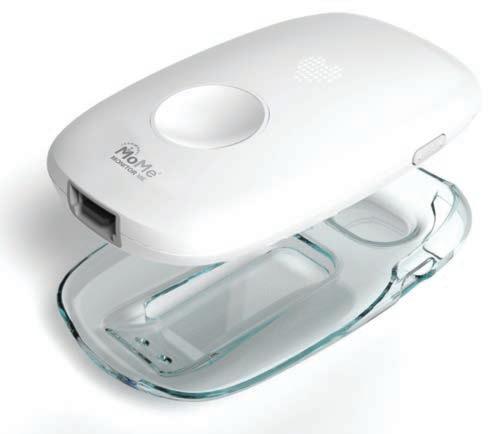
The MoMe Kardia monitor is an external wearable sensor that provides near-real-time ECG data to increase early detection and diagnosis of cardiac arrhythmias. Source: InfoBionic
8
Number of companies currently exploring wearable tech in real-life mining situations. Specific benefits to RPM devices
As more healthcare practitioners turn to RPM devices to keep tabs on health consumers, a growing number of benefits are already being realized. These include: • Ability to collect various types of data using one device • Better management of chronic health conditions • Ease of access to patient data • Increased efficiency in practice • Lower cost.
Consumers, who are becoming more comfortable with RPM technology, also benefit from: • Better clinical outcomes • Continuous monitoring of health • Immediate transfer of clinical data
It’s not to say that smart watches and fitness trackers have no place in healthcare. Instead, we should realize that these tools can be used in addition to dedicated RPM devices. Remote monitors, smart watches, and trackers can even be used together to present a more complete picture of a person’s health.
“The difference between a smart watch and a diagnostic RPM is that the medical device is prescribed by a doctor and a qualified clinician is at the other end, who can detect when there’s a problem. The doctor can call the patient and advise him or her to as to next steps in their care. It’s important to use the right tool for the right job, especially when it comes to cardiac care,” says Long.
InfoBionic is a digital health firm tspecializing in ambulatory remote patient monitoring processes and cardiac diagnostic services. https://infobionic.com
Chip shortages to assist supply chain in long run
BY DAVID STEIN, DIGI-KEY
The semiconductor market has been on quite a tumultuous ride the last year and a half, with unprecedented customer demand and a supply chain unable to keep up due to a variety of reasons. As we move toward a more stable supply chain in 2022, which I believe we’ll really begin to see in the latter half of next year, there are four major lessons I think we can all take away from the supply chain struggles the entire globe has experienced these last two years. I firmly believe that if we do take these lessons to heart, they can strengthen the supply chain in the long run and provide a more solid supply chain to weather future complications.
Backup methods are key
What suppliers really learned through this crisis was how close they need to be to every element of their supply chain. Having backup plans for every element and not taking any element for granted has been key. And backup plans should be as wide as a variety of shipping methods, from air to boat to rail, and any mix of those three methods.
Keeping a little inventory around is never a bad idea – you never know when or where supply chain disruptions can happen. Sadly, climate change is only going to get worse – we’ve seen more climate disruptions over the past five years than we’ve seen in the previous 20 years. Floods and fires have caused factories to shut down for extended periods of time, and earthquakes and tornados have wreaked havoc. All these shutdowns create major issues for a supply chain output.
And, we are seeing a real shift of more companies embracing just-in-case strategies rather than just-in-time inventory models. Even if a full shift isn’t a model your company can embrace fully, having a bit of backup inventory can be the key to tide you over in an emergency.
Digi-Key’s inventory model is more important than ever for the engineering community to be aware of the stock we have available. Today, Digi-Key offers 12.6 million parts from 2,000 suppliers, and since January 2021, we have added 500 new suppliers and 1.1 million parts.
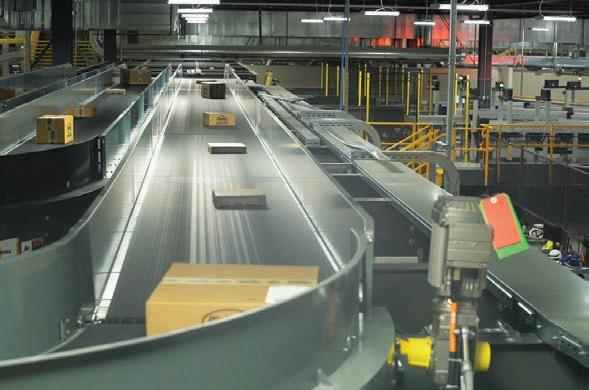
Automated conveyor systems at Digi-Key’s facility in Thief River Falls.
Building flexible BOMs
We’re already starting to see engineers design more flexible bills of materials that allow for greater part substitution. Having the engineering community design more flexible circuits that allow for sourcing of three or four parts, instead of just a single, required component, will open up many bottlenecks and prevent them in the future. By designing with substitute possibilities in mind, engineers can account for interchangeability of items due to inventory in the future.
With a flexible practice of BOM management, designers can create a sub-level BOM for items they define as alternate options. The bullwhip effect is due to a variety of market elements including demand forecast updating, order batching, price fluctuations and rationing
Global manufacturing
With the heavy dependency of the semiconductor supply chain based in Asia Pacific countries, the ability to transport product has been difficult. Getting product distributed throughout the world when transportation channels are clogged has been challenging to say the least. And while we are starting to see manufacturing spread out a bit more worldwide, it’s really important to understand where your suppliers’ foundries are located, and if they have the ability to manufacture products at different manufacturing facilities as needs arise.
New tech adds support
While everyone has struggled to stay afloat and keep up with demand and supply chain constraints, many new technologies have also been in the works to aid future supply chain issues. Digi-Key recently debuted a new video series called “Supply Chain Transformed” that follows the journey of components across the supply chain as they are integrated and incorporated into next-generation asset monitoring and tracking systems. The videos highlight the stops a product makes throughout its route from design to production, including warehouses, manufacturing facilities, shipping and more.
IoT sensors will be essential to tracking products through the supply chain in the future, leading monitoring and tracking to become smarter and better connected. Beyond smart sensors, emerging technologies include indoor positioning, robots and cobots, smart route optimization, and monitoring solutions to ensure the security, safety, and reliability of workers products, such as temperature monitoring, condition-based monitoring, and the use of blockchain.
Struggles will repeat
We know that the semiconductor industry experiences the bullwhip effect due to a variety of market elements including demand forecast updating, order batching, price fluctuations and rationing. This pattern will repeat itself, and therefore we must acknowledge that some of the same supply chain struggles will also repeat themselves. It will die down for a while, but a bullwhip always swings back up at some point.
We can lessen the size of the bullwhip by identifying backup methods, keeping some inventory on hand, designing with flexible circuitry, mapping out each foundry you do business with and deepening relationships with all your supply chain partners.
The last 18 months have shown us how important having the right supply chain partner really is, and it has also opened the market to allow more competition to enter and be part of the solution as well.
David Stein is vicepresident of global supplier management at Digi-Key Electronics. https://www.digikey.ca








